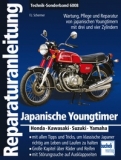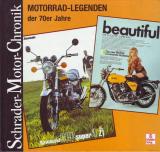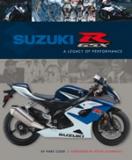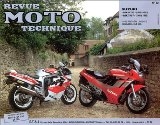E-shop
- * CD/DVD/BLU-RAY
- * Dárkové poukazy
- * Kalendáře
- * Magazíny
- * NAVIONICS
- * Plakáty a grafické listy
- * Prospekty a brožury
- * Slovníky
- ATV, čtyřkolky, sněžné skůtry
- Autobusy, tramvaje, trolejbusy
- Automobily osobní a dodávky
- _Automobilová technika
- _Autokatalogy
- _Caravaning
- _Design
- _Elektromobily & hybridy
- _Karosárny & karosáři
- _Osobnosti & konstruktéři
- _Repliky / kitcars / stavby
- _Sbírky a muzea
- _Sport
- _Veteráni
- Abarth
- AC
- Acura
- Adler
- Aero
- Africar
- Alfa Romeo
- Allard
- Allstate
- Alpine
- Alvis
- AM General
- AMC
- Americké automobily
- Armstrong Siddeley
- ARO
- ASA
- Aston Martin
- Auburn
- Audi
- Austin
- Austin-Healey
- Austro-Daimler
- Auto Union
- Autobianchi
- Ballot
- Bantam
- Barkas
- Bedford
- Bentley
- Benz
- Berkeley
- Bitter
- Bizzarrini
- BMW
- Bond
- Borgward
- Brabham
- Bricklin
- Bristol
- British Leyland
- BRM
- Brough Superior
- BSA
- Bugatti
- Buick
- Cadillac
- Callaway
- Caterham
- Citroen
- Cisitalia
- Clan
- Colt
- Cord
- Crosley
- Crossley
- Cunningham
- Dacia
- Daewoo
- DAF
- Daihatsu
- Daimler
- Dallara
- Darracq
- Datsun
- De Dietrich
- De Dion
- Delage
- Delahaye
- DeLorean
- Denzel
- DeSoto
- De Tomaso
- Diatto
- Dixi
- DKW
- Dodge
- Duesenberg
- Eagle
- Edsel
- Elva
- EMW
- ERA
- Excalibur
- Facel Vega
- Falcon
- Ferrari
- Fiat
- Ford
- Ford USA
- Frazer-Nash
- FSO Fiat Polski
- General Motors
- Genesis
- Geo
- Ginetta
- Gilbern
- Glas
- GMC
- Goggomobil
- Goliath
- Gutbrod
- Hanomag
- Hartnett
- Healey
- Henney
- Hillman
- Hino
- Hispano Suiza
- Holden
- Hommell
- Honda
- Horch
- Hotchkiss
- Hudson
- Humber
- Hummer/Humvee
- Hyundai
- Checker
- Chevrolet
- Chrysler
- Chrysler Europe
- IFA
- Imperial
- Infiniti
- Innocenti
- Intermeccanica
- International
- Invicta
- ISO
- Isotta-Fraschini
- Isuzu
- Itala
- Iveco
- Jaguar
- Jeep
- Jensen
- Jowett
- Kaiser-Frazer
- Karmann
- KdF
- Kia
- Lada/VAZ
- Lagonda
- Lamborghini
- Lancia
- Lanchester
- Land Rover
- Laurin-Klement
- La Salle
- Lea-Francis
- Lexus
- Light Car Co.
- Ligier
- Lincoln
- Lloyd
- LMX
- Locomobile
- Lola
- London Taxi Intl.
- Lotus
- Marendaz
- Marcos
- March
- Marmon
- Maserati
- Matra-Simca
- Maybach
- Mazda
- McLaren
- Mercedes-Benz
- Mercury
- Messerschmitt
- Metalex
- MG
- Mini
- Mitsubishi
- Monica
- Monteverdi
- Moretti
- Morgan
- Morris
- Moskvič
- Muntz
- Nash
- Nissan
- Noble
- NSU
- Oldsmobile
- Oltcit
- Opel
- OSCA
- Packard
- Pagani
- Panhard
- Panoz
- Panther
- Peerless
- Pegaso
- Peugeot
- Park Ward
- Pierce-Arrow
- Plymouth
- Pontiac
- Porsche
- Praga
- Puch
- Puma
- Rambler
- Range Rover
- Reliant
- Renault
- Proton
- Railton
- Riley
- Riva
- Rochdale
- Rolls-Royce
- Rover
- Röhr
- Saab
- Saturn
- Scioneri
- Seat
- Shelby
- Schustala
- Simca
- Singer
- Smart
- Spyker
- Standard D
- Standard GB
- Stanguellini
- Steyr
- Studebaker
- Subaru
- Stutz
- Sunbeam
- Suzuki
- Swallow
- Syrena
- Škoda
- Talbot
- Tarpan
- Tatra
- Terraplane
- Tesla
- Tojeiro
- Toyota
- Trabant
- Trident
- Triumph
- Tucker
- TVR
- Tyrrell
- UAZ
- Unipower
- Vanwall
- Vanden Plas
- Vauxhall
- Vector
- Venturi
- Voisin
- Volha / GAZ / Čajka
- Volkswagen
- Volvo
- Walter
- Wanderer
- Wartburg
- Warszawa
- Wiesmann
- Wikov
- Westfield
- Williams
- Willys
- Wolseley
- Yugo/Zastava
- Zagato
- ZAZ
- Zbrojovka
- ZIL
- Zimmer
- Automobily nákladní a tahače
- Cyklistika
- Hudební nástroje, hudba
- Letectví, kosmonautika
- Lodě, lodní technika
- Malá motorová technika
- Modely a sběratelství
- Motocykly
- Počítače, IT
- Traktory, zemědělská technika
- Železniční technika, vlaky
- Zbraně, vojenská technika
- Zdraví, domácnost, sport


![]()



![]()


![]()

![]()

![]()



Úvod »Automobily osobní a dodávky»Glas » Suzuki GSX-R750 Performance Portfolio 1985-1996
Anotace
| Vazba: | Brožovaná | ||
| Počet stran: | 136 | ||
| Rozměry v mm: | 210 x 280 | ||
| Počet obrázků: | 350 | ||
| Rok vydání: | 2002 | ||
The GSX-R750 screamed onto the world stage at Cologne in 1984 and its arrival stung like a slap around the face. While the other Japanese manufacturers developed well-mannered, well-rounded, water-cooled sport-touring bikes, Suzuki created a whole new style of motorcycle which blasted way beyond the super-sports boundaries. In March 1985 the era of the race-replica truly began, when the initial batch of GSX-R750 machines went on sale. The outrageously snappish two-stroke RG250 arrived in 1983 and set the stage for its extremist 750 sibling. Like the GSX-R that followed it, the RG was a racetrack-inspired roadbike which relied heavily upon racing technology. When Suzuki applied the same principles, low mass, high power, who needs luggage anyway, to its four-stroke equivalent, their engineering expertise led them away from the flavour-of-the-moment liquid-cooled engine. Instead they opted to refine their oil-cooling methods, and so the first of many acronyms was born. SACS (Suzuki Advanced Cooling System) was more than just a pretty name; it provided better cooling efficiency over the water-cooled motors of the day and delivered a 10% weight saving. The GSX-R bristled with other innovations which had only before been seen on the racetrack. Way ahead of today's ram-air systems, it featured DAIS (Direct Air Intake System) and flat-slide carbs. The chassis was inspiring too; a multi-rib aluminium box-section frame which weighed only eight kilos. With its twin-headlight full-race fairing, the GSX-R looked just like a racebike. It rode pretty much like one, too. Over the years the GSX-R750 collected championships - like the World Endurance title in 1988 - and kudos. With every development the bike sprouted the latest must-have performance components; multi-way adjustable suspension, radial tyres on hollow wheels, floating multi-caliper disc brakes, Slingshot carbs and inverted front forks. When liquid-cooling could no longer be avoided the GSX-R made the most of it - the WN model introduced in 1992 boasted a horsepower gain of 6bhp over its oil-cooled predecessor, yet the bike's mass remained the same. The story comes full circle as this volume ends, with the introduction of the GSX-R750T at the close of 1995. Suzuki made sure to keep their trend-setting race-replica at the forefront of the super-sport field, and the T represented the next step forward. Just like the original GSX-R, the T was based around developments in the Grand Prix field of two-stroke racing, using the technology perfected for the RGV500 championship winner. But, as they say, that’s another story. There's more than enough here about the first decade of the GSX-R750 for you to understand why it's still a world-beater today. This is a book of contemporary road & comparison tests, technical data, riders impressions, long term reports & new model intros.
Models covered: GSX-R750, XG, F, G, H, J, K, L, M, WN, WP, WR & T. 136 pages, 350 illus.




















